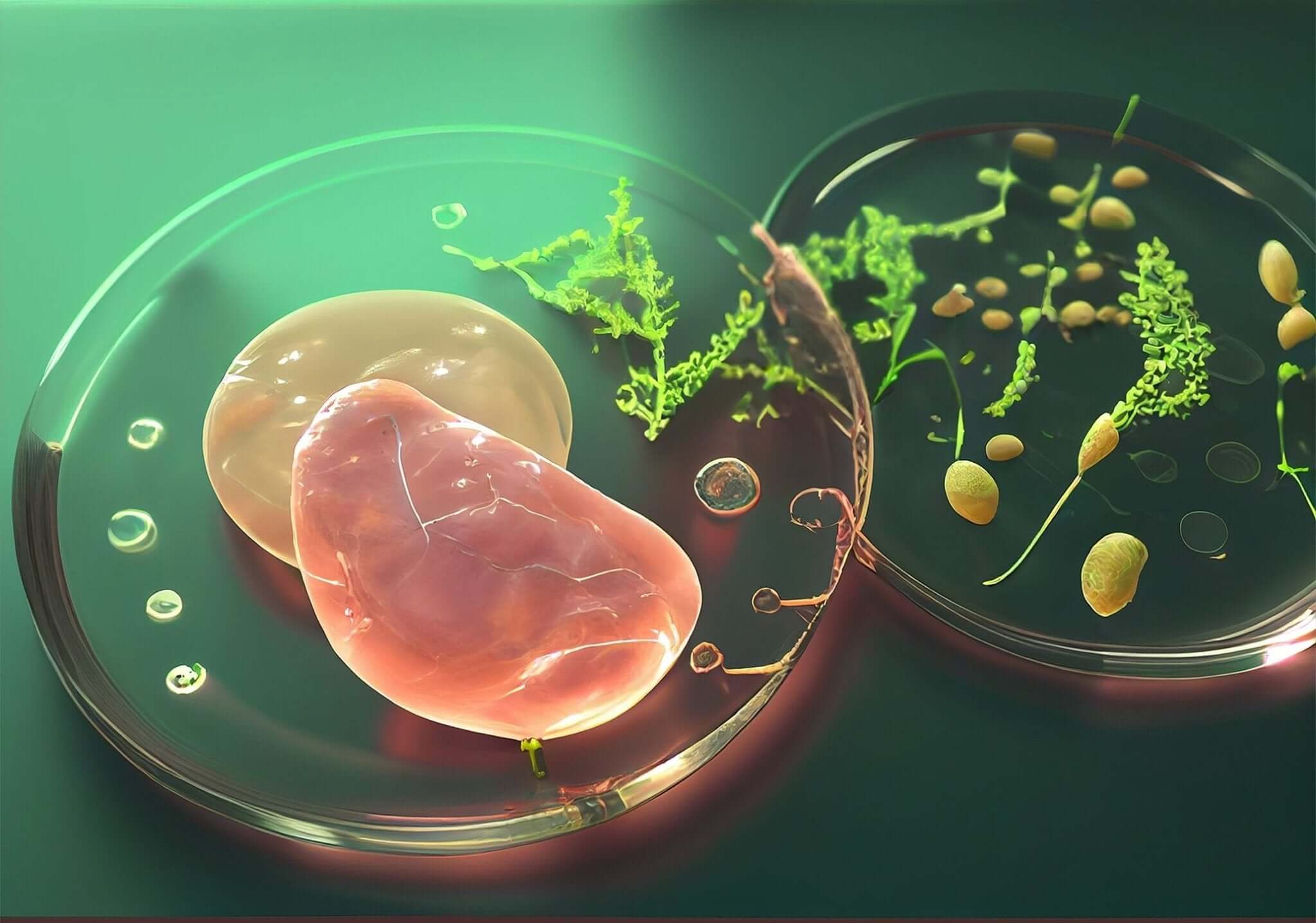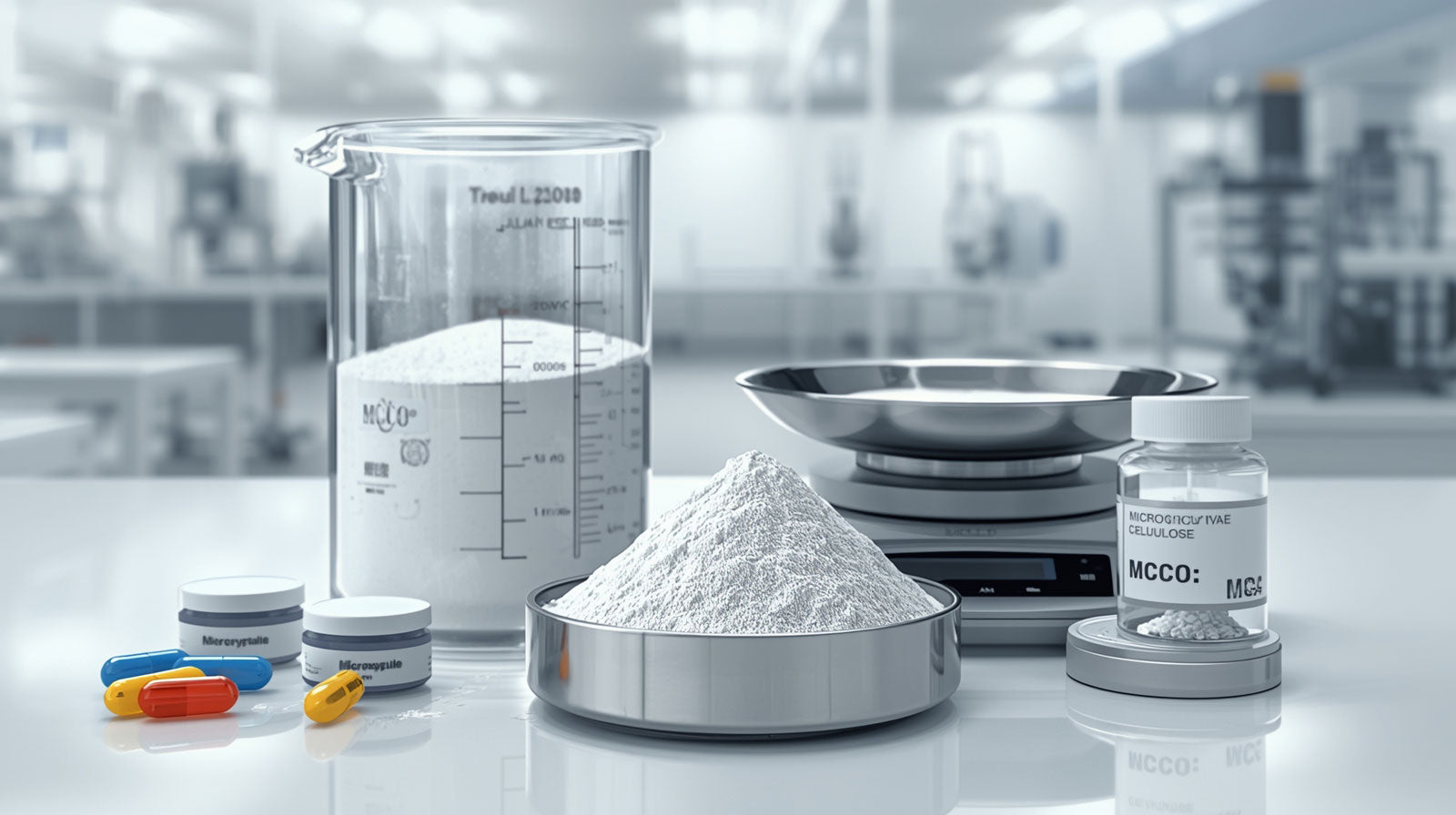
Exploring the Benefits of Cell-Based Food Production
SUBSCRIBE TO OUR BLOG
Promotions, new products, and recipes.
ABOVE: Cell-based meat being grown in the laboratory.
Welcome to the future of food: cell-based meat production. As we’re witnessing a remarkable shift in the way we approach food, our planet, and animal welfare, it’s time to explore the tantalizing world of cell-based food. In this eye-opening journey, we’ll dive into the upsides, challenges, and ethical considerations of this ground-breaking technology. So put on your lab coat, and let’s dive in!
Key Takeaways
-
Say goodbye to animal agriculture and hello to cell-based food - the sustainable, ethical way to enjoy meat without the guilt!
-
Cell-based food production offers numerous environmental, health, and animal welfare benefits for a better tomorrow.
-
With innovative research and responsible implementation, it’s time we get serious about making sure this transition is done right!
The Rise of Cell-Based Food
The desire for meat throughout the world is growing, calling for alternative proteins to become a necessity. In steps cultured meat – an innovative technology that utilizes animal cells in order to manufacture sustainable and ethical substitutes without any involvement of traditional farming practices. More than 150 companies have already seized the opportunity by taking advantage of elements such as stem cell biology, tissue engineering, and many more related disciplines within this field.
At present Federal Meat Inspection Act regulations need to be taken into account when considering engineered meats as food products. With their development emerges another kind of satisfying our global consumption needs, one where we can savor juicy burgers without causing environmental damage or inflicting cruelty upon animals largely thanks to advancements made in livestock cell culture technologies all across academic laboratories worldwide..
This shift towards alternative forms has granted us access beyond veganism since it permits people with strong preferences toward conventional foods like hamburgers to experience similar flavors while still staying true environmentally conscious diets on plant-based alternatives up until now had been viewed solely from consumers' perspectives
Why is cell-based food gaining attention?
Cell-based food is getting a lot of attention due to its potential positive effect on the environment, animal welfare, and more. Unlike traditional methods of animal agriculture, cell-based food production can result in fewer greenhouse gas emissions, less deforestation, and improved treatment of animals which makes it an attractive option for many people. Even so, there are still some challenges such as scaling up production processes and ensuring consumer acceptance that need to be addressed before mass adoption takes place. Companies dedicated to producing high-quality yet sustainable cells-based products provide hope for future advancements when it comes to creating eco-friendly meals with minimal impact on climate change or resources used.
Companies pioneering cell-based food
Cell-based food production is quickly becoming a reality with the introduction of products such as Mosa Meat’s hamburger and Memphis Meats’ chicken, beef, and duck. Companies like Meatable, New Age Meats, Higher Steaks, Eat Just, Finless Foods & Wild Type are paving the way in this sector. These trailblazers have acquired considerable investments to make their ambitious plans viable for consumers. Both Mosa Meat and Memphis Meats received large sums of $161 million respectively while $47 million was accumulated by a series funding from Meatables alone - all of which serves to push cell-based foods even into mainstream use! The potential impact that could be achieved by successfully bringing innovative concepts into everyday life has become increasingly apparent It appears as if we will soon witness changes within our general perspectives surrounding consumption patterns when it comes to conventional ‘meateating’.
Cell-Based Food Production Process
Cell-based food production is an amazing process composed of three steps: sourcing starter cells from animals without harming them, using a controlled environment to cultivate the extracted cells, and applying tissue engineering techniques for manufacturing the end product. What you get as a result is not only flavorful but also more sustainable than traditional meat.
The first stage starts with obtaining samples from live animals by performing biopsies or muscle mincing that don’t inflict any harm on them. These are then placed in bioreactors where they receive nutrients and growth factors that help promote their development into actual muscle tissues. Once this step has been completed we mix other ingredients such as plant-based proteins with our initial products so they resemble classic meats regarding taste and texture, thus producing ethically obtained alternatives that can replace conventional forms of livestock consumed today.
Obtaining starter cells
Cell-based food production involves the selection of starter cells taken from live animals using minimally invasive methods such as biopsies and muscle mincing. Careful consideration is required when choosing which cell line to use, taking into account various features including suspension growth suitability, doubling times, growth rates, metabolism, differentiation capacity, and genomic stability. With these factors in mind, a sustainable product can be created that replicates traditional meat products with great success.
The process begins by obtaining those precious starter cells humanely through biopsy or muscle mincing techniques for optimum safety during collection – an essential first step towards creating delicious alternatives to animal-based meats. It’s imperative researchers consider everything from cellular characteristics like a metabolic rate to its ability to replicate itself quickly before selecting their ideal cell line so they have all the necessary ingredients in place for successful cell-based food production
Cultivating cells
After the acquisition of starter cells, bioreactor cultivation is necessary to progress toward creating a meat substitute. This involves feeding oxygen-rich growth media (cell culture medium) containing essential elements like amino acids, glucose, vitamins, and inorganic salts to provide an environment that mimics animal physiology for optimal muscle or fat cell multiplication and differentiation into tissue. Depending on what type of product is being developed this step may last anywhere between two weeks to several months with attentive control over the bioreactor atmosphere allowing perfect conditions throughout each cycle’s development process.
Utilization of Hydrocolloids
Hydrocolloids are substances that form gels in the presence of water. They are commonly used in the food industry to modify the texture of foods, acting as thickeners, stabilizers, emulsifiers, and gelling agents.
In the context of cell-based meat:
-
Scaffold Material: Hydrocolloids can be used to create scaffolds on which cells can grow and differentiate. The scaffold provides a three-dimensional structure that mimics the extracellular matrix found in animal tissues, allowing cells to attach, proliferate, and organize into tissue-like structures.
-
Texture and Mouthfeel: Just as hydrocolloids are used in traditional food products to modify texture, they can also be used in cell-based meat products to achieve desired textural properties.
-
Nutrient Delivery: In some cases, hydrocolloids can be used to encapsulate and deliver essential nutrients to the growing cells in a controlled manner.
-
Protection: Hydrocolloids can form protective layers or coatings around cell aggregates or tissue structures, potentially protecting them from mechanical damage or oxidative stress.
-
Binding Water: Hydrocolloids have the ability to bind and retain water, which can be crucial for maintaining the moisture content of the final product.
It's worth noting that the use of hydrocolloids in cell-based meat is still an area of active research, and the specific hydrocolloids used, as well as their concentrations and applications, can vary depending on the production method and the desired properties of the final product. Common hydrocolloids that might be considered include agar, alginate, carrageenan, gelatin, and cellulose derivatives, among others.
Creating the end product
The creation of the final product is achieved by blending together cultivated cells with plant-based proteins and scaffolding materials. These are necessary to produce a muscular structure that mimics the taste, texture, look, and feel of traditional meat. It takes careful consideration in regard to each ingredient as well as attention to detail when crafting this sustainable alternative to conventional meats.
Scaffolds lend structural support so that cell growth can occur properly giving it its desired shape along with an appetizing appearance upon completion. The selection of ingredients must be precise for one successful outcome after all has been done – making sure everything works harmoniously together gives diners a tasty solution without having any animal products involved whatsoever.
These measures result in something delectable while also being ecologically friendly, recreating dishes similar yet superior compared to how they were originally made from standard meat sources.
Advantages of Cell-Based Food
The advantages of cell-based food production are various and clear, making it an attractive replacement for traditional meat. Firstly, compared to conventional animal agriculture which is more resource-intensive and causes a great amount of waste with greater greenhouse gas emissions, this kind of alternative has the potential to be much more eco-friendly.
To that benefit, another major advantage in terms of animal welfare would result from not having animals needlessly raised just so they can be slaughtered as a source of food, something achieved by opting out entirely from such practices by moving towards the usage of cell-based foods instead. Finally looking at things on the health side matters. There should significantly lower risk of illnesses resulting from eating those products along with reduced cases of antibiotic resistance since these issues come hand in handy usually when dealing with classic forms of meat production methods.
Environmental impact
Cell-based meat production has undeniable environmental advantages. Research reveals that this type of food fabrication could create a significant reduction in global warming, air pollution, and land use compared to conventional approaches. With an estimated 92%, 93%, and 95% decrease respectively. Cell-based processes would require 78 percent less water than traditional strategies making it much more efficient when considering conservation efforts related to deforestation as well as decreasing methane emissions from livestock farming. By selecting these options consumers are doing their part for the environment while contributing towards protecting our planet’s future generations
Animal welfare
Cell-based food production offers a great advantage to animal welfare, as it eliminates the need for raising and slaughtering animals. By buying cell-based food products, customers can help promote a more compassionate approach towards meat manufacturing and potentially decrease the number of creatures bred for consumption, leading to increased well-being in countless species. This is one key benefit of opting into this type of sustenance creation over conventional methods. While also creating healthier alternatives that are free from hormones or other chemicals associated with traditional farming practices.
Food safety and health benefits
Cell-based meat offers various benefits beyond its positive environmental and animal welfare impact. As traditional methods of producing it are eliminated, the chances of experiencing foodborne illnesses or antibiotic resistance from consuming this type of meat reduce significantly. With cell-based food production comes greater control over nutritional content which could enable consumers to make healthier choices than standard meats. Given such advantages, many view investing in cellular agriculture as a viable option for future meal solutions.
Challenges and Future Developments
The opportunities and challenges presented by cell-based food production are diverse, requiring careful consideration in scaling up the manufacturing process, gaining consumer confidence, and finding ways to innovate. These responsibilities all need to be taken seriously if this technology is ever going to become a standard option for people’s diets.
But it may well be worth overcoming these barriers due to its potential advantages, more businesses becoming dedicated to researching such advances as well as regulatory bodies having an aim of establishing consistent rules have positively supported the progress towards making cell-based food a reality.
Scaling up production
The challenge of scaling up the process to meet global demand in cell-based food production is great and will require advances such as bioreactor technology improvements, cost-lowering techniques, and regulatory approval. This would be only achievable through collective efforts between industry leaders, companies involved, and those who enforce regulations. Working together can enable this sector to grow successfully while providing these innovative products on a larger scale for all people’s benefit.
Consumer acceptance
Securing consumer acceptance of cell-based food production poses a significant challenge. This hinges on factors like price, public opinion, and especially the taste and safety of these products. To address this, firms must create appealing items that have ethical origins while being affordable to shoppers as well. It is also critical for companies to implement informative marketing campaigns with ongoing educational initiatives in order to foster an accepting mindset among consumers toward cell-based foods.
Innovations and research
Continuous research and pioneering advances have been the major drivers of this cell-based food revolution. In order to progress, Discoveries must be made in areas like culture media, scaffolding as well and types of cell lines which can play a fundamental role in ensuring successful outcomes within the ever-evolving industry.
Being at the cutting edge with constant innovation combined with expanding possibilities for production through cells means that it is possible to transform our attitudes towards how we consume food products while creating more ethical and healthier future solutions.
Ethical Considerations and Debates
The ethical questions raised by cell-based food production are crucial and should be addressed through dialogue between stakeholders. These include the use of animal components in the manufacturing process, what effect this will have on traditional livestock farming, plus implications for animal welfare.
These may only represent a few examples out of many considerations worth exploring when it comes to cell-based food development. Engagement with all aspects involved is necessary so that such technology can progress responsibly and ethically.
By discussing carefully its implications – from any possible utilization of elements derived from animals or whatever impact this might mean regarding existing methods concerning livestock breeding -cell-based food industry’s partners can contribute towards making sure proper standards measure up to an accountable approach within their sector.
Animal-derived components
In the production process of cell-based food, one ethical concern that comes up is the use of animal-derived components such as fetal bovine serum. While this technology reduces reliance on traditional forms of animal agriculture it still raises questions about its truly moral impact with regards to continuing usage of these kinds of products. Researchers and companies are endeavoring to find alternatives for those materials that do not rely on animals in order to make cell-based food more ethically produced and sustainable.
Labeling and marketing
For cell-based food products to be trusted and accepted by consumers, clear and informative labeling and advertising are essential. Incorrect or deceptive claims can not only ruin public confidence but also put the company at risk of penalties from regulatory organizations.
To guarantee responsible marketing of these goods, businesses need to collaborate with governing bodies carefully while abiding closely by established rules regarding labels as well as promotion methods. By being transparent in their communication efforts, companies will assist customers when it comes time for them to make an educated decision on what items they consume.
Societal implications
The cell-based food industry is gaining momentum, prompting stakeholders to confront the societal implications that arise from its expansion. Issues related to environmental impacts and animal welfare are some of these considerations as well as concerns over potential job displacement in traditional animal agriculture. As such, it will be imperative for groups like the Food and Agriculture Organization (FAO) to play a vital role so this transition towards more sustainable practices can be inclusive yet smooth. Shifts may need to happen too with regards to attitudes about meat consumption during this process.
Summary
Cell-based food production is a revolutionary technology that can drastically shift our approach to eating. By having numerous positives, such as lessened environmental impact, increased animal welfare, and possible health benefits it looks like cell-based foods are set to be part of the normal diet soon. Thanks in large part to innovations and overcoming obstacles we find ourselves looking forward to an encouraging future which is more beneficial for all involved than ever before when talking about food.
Frequently Asked Questions
What are examples of cell-based food?
Cell-based food production involves the use of animal cells to replicate natural products such as meat, poultry, eggs, and dairy on a cellular level. This process provides an alternative means for producing these items without having to rely solely on traditional methods.
Is cell-based meat good?
Cell-based meat is a feasible option when considering replacing the typical animal-sourced variety. It has all of the nutrients found in its traditional counterpart but lacks any contaminants usually associated with farm animals, Making it healthier overall.
This type of meat also offers a more sustainable solution due to lower resource utilization and minimal environmental impact compared to regular sourced options. Cell-based meats offer an attractive alternative from both nutrition and sustainability perspectives.
What company makes meat from cells?
The United States is embracing a revolutionary trend in food production: lab-grown meat made from animal cells. Join Biologics, Upside Foods, and Good Meat are pioneering this development, with California taking the lead. These companies have provided an innovative alternative to regular meats produced by traditional methods, meaning people can now savor mouthwatering dishes while reducing their environmental footprint.
How does cell-based food taste compared to traditional meat?
Testers of cell-based meat products have said the flavor is comparable to traditional flesh, meaning it can provide a similar taste with an improved sustainability aspect.
Is cell-based food nutritious?
Cell-based food has the potential to provide an alternative that is just as nourishing, if not more so than traditional meat products. By tailoring their nutritional content, these foods may offer a variety of unique.


|
About the Author Ed is the founder of Cape Crystal Brands, editor of the Beginner’s Guide to Hydrocolloids, and a passionate advocate for making food science accessible to all. Discover premium ingredients, expert resources, and free formulation tools at capecrystalbrands.com/tools. — Ed |
Enjoyed this post? Subscribe to The Crystal Scoop
Food-science tips, ingredient know-how, and recipes. No spam—unsubscribe anytime.
- Choosing a selection results in a full page refresh.



